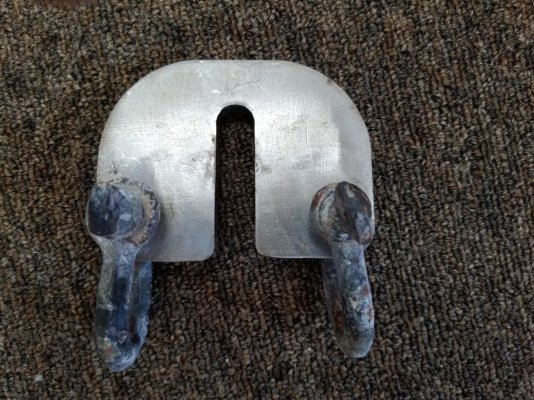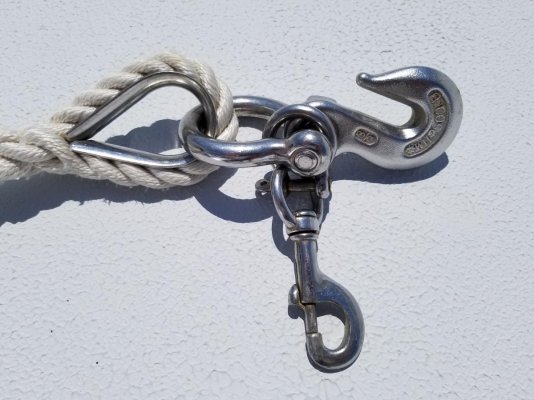BruceK
Moderator Emeritus
- Joined
- Oct 31, 2011
- Messages
- 13,347
- Vessel Name
- Sojourn
- Vessel Make
- Integrity 386
We carry both single line hook/bearclaw and a 2 line Seadog plate snubbers. The former works ok, but what bothers me is the load on one link which I think the plate system avoids.






